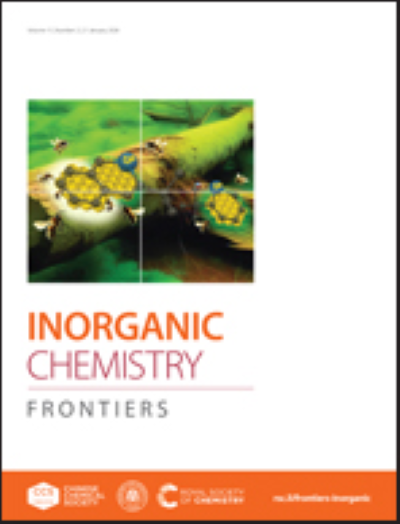Self-template fabrication of Cu/Fe bimetallic dual-atom catalyst for enhanced ORR activity
IF 6.1
1区 化学
Q1 CHEMISTRY, INORGANIC & NUCLEAR
引用次数: 0
Abstract
The oxygen reduction reaction (ORR) serves as a pivotal process in the operation of zinc-air batteries and fuel cells, playing a decisive role in their energy conversion efficiency. However, the scarcity of high-performance ORR electrocatalysts has emerged as a crucial bottleneck that restricts the enhancement of energy conversion efficiency in these sustainable electrochemical systems. In this study, we employ a self-template strategy for the precise preparation of copper and iron bimetallic dual-atom active sites anchored on metal-organic-framework (MOF)-derived highly poriferous carbon nanosheets. This bimetallic diatomic catalyst (CuFe-NCN) possesses highly homogeneous and atomically precisely dispersed active sites, which significantly enhances its catalytic activity for the ORR throughout an extensive pH range. It exhibits outstanding electrocatalytic activity for the ORR in alkaline, neutral, and acidic solutions, outperforming commercial Pt/C catalysts. Specifically, the half-wave potentials are 0.95 V in alkaline solution, 0.79 V in neutral solution, and 0.80 V in acidic solution. To explore the bifunctional properties of the electrocatalyst, its oxygen evolution reaction (OER) performance was studied. For CuFe-NCN, the potential is 310 mV at a current density of 10 mA cm-2, which is superior to that of the commercial RuO2 (440 mV). When utilized in the assembly of zinc-air battery (ZAB) devices, it functions steadily at 5 mA cm-2 for a period of 910 h and reaches a power density peak of 281 mW cm-2. Furthermore, the assembled flexible zinc-air battery maintains stable operation for 200, 150, and 150 h at 0.5, 1, and 2 mA cm-2, respectively.自模板制备Cu/Fe双金属双原子催化剂增强ORR活性
氧还原反应(ORR)是锌空气电池和燃料电池运行的关键过程,对锌空气电池和燃料电池的能量转换效率起决定性作用。然而,高性能ORR电催化剂的稀缺已经成为制约这些可持续电化学系统提高能量转换效率的关键瓶颈。在这项研究中,我们采用了一种自模板策略来精确制备铜和铁双金属双原子活性位点,这些活性位点锚定在金属有机框架(MOF)衍生的高多孔碳纳米片上。这种双金属双原子催化剂(CuFe-NCN)具有高度均匀和原子精确分散的活性位点,在广泛的pH范围内显著提高了其对ORR的催化活性。它在碱性、中性和酸性溶液中对ORR表现出出色的电催化活性,优于商用Pt/C催化剂。在碱性溶液中,半波电位为0.95 V,在中性溶液中为0.79 V,在酸性溶液中为0.80 V。为了探索电催化剂的双功能特性,研究了其析氧反应(OER)性能。CuFe-NCN在电流密度为10 mA cm-2时的电位为310 mV,优于商用RuO2 (440 mV)。当用于锌空气电池(ZAB)器件的组装时,它在5 mA cm-2下稳定工作910 h,功率密度峰值达到281 mW cm-2。此外,组装的柔性锌-空气电池在0.5、1和2 mA cm-2下分别保持200、150和150小时的稳定运行。
本文章由计算机程序翻译,如有差异,请以英文原文为准。
求助全文
约1分钟内获得全文
求助全文
来源期刊

Inorganic Chemistry Frontiers
CHEMISTRY, INORGANIC & NUCLEAR-
CiteScore
10.40
自引率
7.10%
发文量
587
审稿时长
1.2 months
期刊介绍:
The international, high quality journal for interdisciplinary research between inorganic chemistry and related subjects
 求助内容:
求助内容: 应助结果提醒方式:
应助结果提醒方式:


